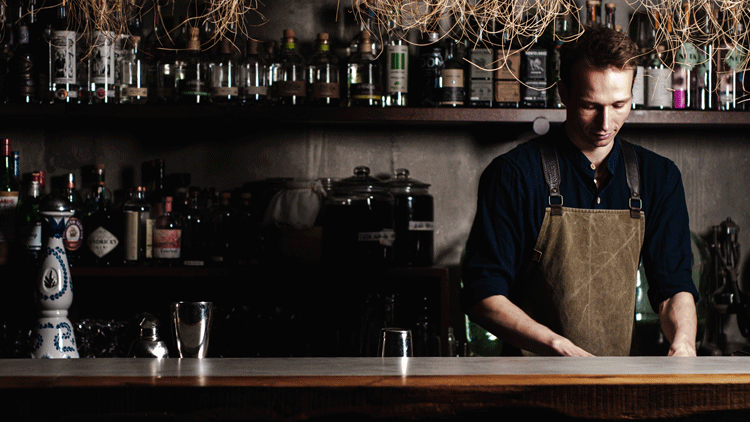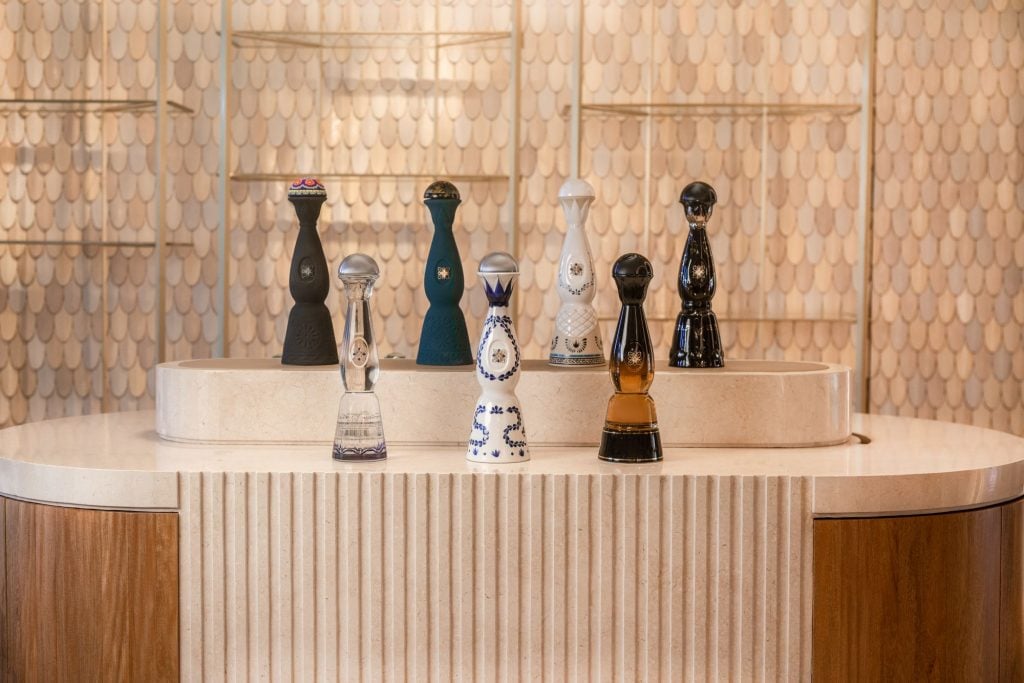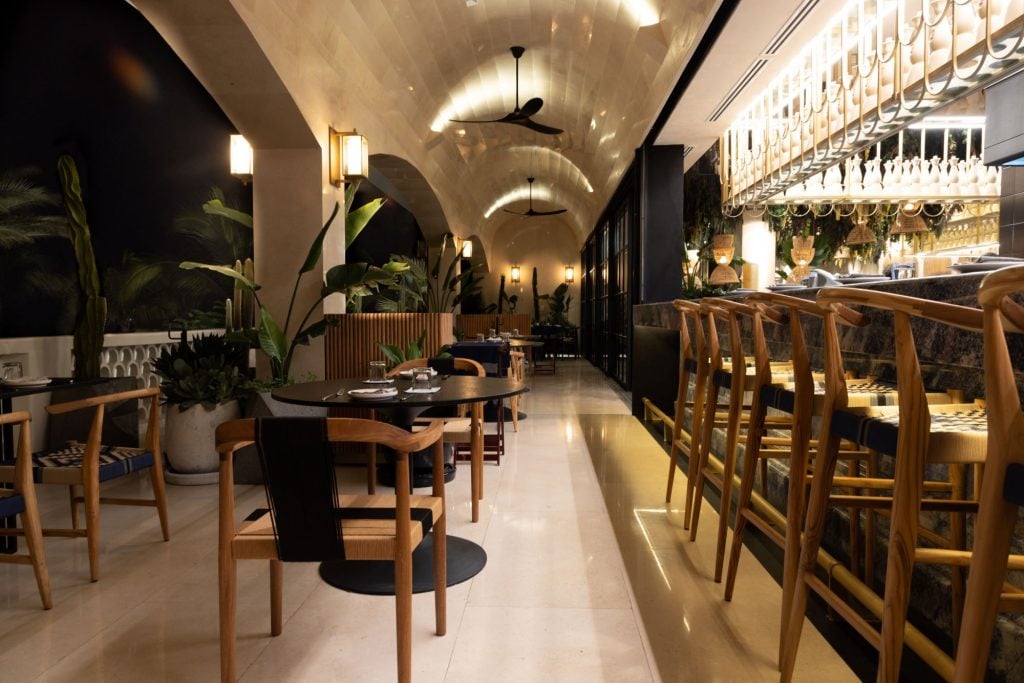The market for high-end super premium Tequila has come out of nowhere to be one of the fastest growing categories. So we’re taking a look at the finest Tequila known to humanity!
Every quarter we produce a trend report for Master of Malt’s trade customers. One of the most striking statistics from the last one was that sales of Tequila over £150 have increased by 578% over the past two years. I was going to stick a ‘massive’ or ‘eye-watering’ in there but a number that big needs no embellishment.

Matthias Ingelmann in action with a very distinctive-looking bottle on the bar
Super premium Tequila takes off
Co-founder of Tequila brand Mijenta Mike Dolan said: “Essentially, the more premium the Tequila, the faster it’s growing.” His company launched an over $150 Mijenta Añejo Gran Reserva in 2022 with a limited production run of 2,000 bottles. Initially it was just sold online in the US and sold out in days. “We have seen incredible interest from high-end bars and restaurants, which account for a growing share of sales.” Talking of high-end venues, Matthias Ingelmann, bar manager at KOL restaurant in London, has noticed this Tequila trend: “With the increased interest in agave spirits but also a trend towards luxury spirits I’ve definitely seen an increased interest in super premium Tequilas.”
All the big names like Patrón and Don Julio now have luxury bottles but, Ingelmann continued, “in terms of brand recognition the most popular these days is definitely Clase Azul reposado”. With its incredible hand-painted decanters, Clase Azul is one of the most distinctive spirits brands in the world.
The history of Clase Azul
The company was founded in the capital of Jalisco, Guadalajara, in 1997 by Arturo Lomeli. Interestingly the brand which is famous for its gorgeous packaging didn’t get things right the first time. In an interview with CNN Lomeli admitted that the early iteration with its sombrero and moustache combo was “terrible.” He quickly learned his lesson and the brand changed tack.
Each ceramic decanter is a unique work of art, handmade and painted in Santa María Canchesda, a town famous for its craftsmanship using traditional techniques from the indigenous Mazahua people. Over 80% of the artisans are women who often come from impoverished backgrounds without schooling. The company provides childcare, school tuition, meals and transport to help them. Naturally these amazing bottles are much too good to throw away and are usually repurposed as lamp stands or decanters for wine.

No, not a pepper grinder museum, it’s a display of the Clase Azul bottles
Why is Clase Azul so expensive?
The contents are the work of master distiller Viridiana Tinoco who uses only organic blue weber agave from the highlands in Jalisco. These are grown for between six and eight years. And rather than source its Tequila, like many big brands do, Clase Azul has its own distillery, and there is a new distillery and visitor centre in Guadalajara in the pipeline. Furthermore, Clase Azul is 100% Mexican-owned, you’re not getting Tequila as explained to a British audience.
The Clase Azul magic starts with Plata which retails for around £120 and goes up through Gold and Reposado expressions right up to the Clase Azul Ultra Extra Añejo Tequila, which spends a minimum of five years in American whisky and ex-sherry casks. Only 100 bottles are released each year, and it comes in a tasteful little decanter made with three precious metals: platinum, silver, and 24-karat gold. And it retails at around £3000. Tequila slammer anyone?

Clase Azul’s swanky new restaurant La Terraza Los Cabos bar and restaurant in Baja California
How do you drink super premium Tequila?
Seriously though, these sorts of Tequilas are usually drunk neat, on the rocks, or in simple cocktails like an Old Fashioned, according to Ingelmann. Irene Caccialupi, business development director from Clase Azul said: “In the UK, we’re seeing people move away from shooting it with lime and salt and instead buying into ultra-premium sipping Tequilas fuelled by better education that follows a similar pattern seen across the US.”
At the moment, Ingelmann admitted, a lot of the interest comes from American tourists who are “very fixated on those brands” but, he continued: “you can definitely see more and more locals going for it too.” He thinks people appreciate the taste but there’s definitely a big showing off element, “they also enjoy seeing the bottle poured and placed in front of them.” If you’ve got it, flaunt it.
